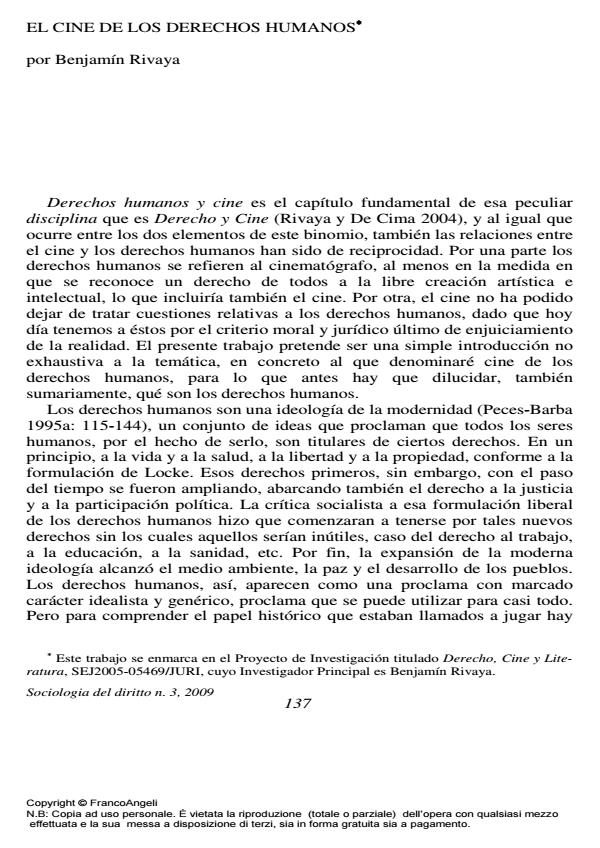The Human Rights Cinema
Journal title SOCIOLOGIA DEL DIRITTO
Author/s Benjamin Rivaya
Publishing Year 2010 Issue 2009/3
Language Spanish Pages 21 P. 137-157 File size 473 KB
DOI 10.3280/SD2009-003007
DOI is like a bar code for intellectual property: to have more infomation
click here
Below, you can see the article first page
If you want to buy this article in PDF format, you can do it, following the instructions to buy download credits

FrancoAngeli is member of Publishers International Linking Association, Inc (PILA), a not-for-profit association which run the CrossRef service enabling links to and from online scholarly content.
Human rights are the criteria that establish what the state and society cannot do and what they must do if they want to act legitimately. As these criteria are ubiqui- tous, the cinema - as the most popular art form - has not been able to escape them and has reflected them in film productions, works that could be classified on the basis of the stance they adopt with regard to them, such that it is possible to talk about a "human rights cinema" (i.e. one that is favourable to human rights) and about an "anti-human rights cinema" (which acts as their detractor): the most blatant example of the latter can be found in what we might term "cinema of vendetta". The human rights cinema, meanwhile, has brought practically all human rights onto the silver screen. As one generation has taken over from its predecessor, we have watched a host of topics portrayed in the movies in defence of the most basic of human rights, civil and political rights, economic, social and cultural rights, followed in due course by the rights to development, to peace and to a healthy environment. Apart from the academic discourse, this type of cinema has proved to be effective in disseminating human rights.
Benjamin Rivaya, El cine de los derechos humanos in "SOCIOLOGIA DEL DIRITTO " 3/2009, pp 137-157, DOI: 10.3280/SD2009-003007